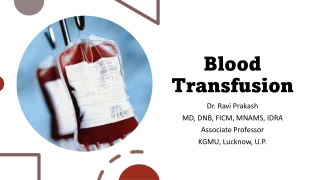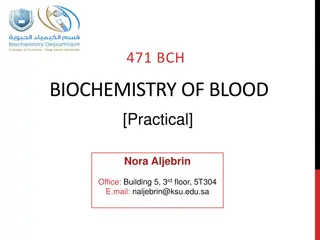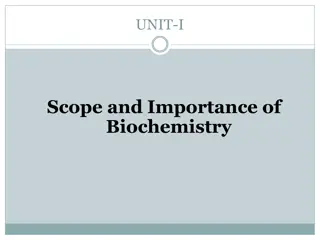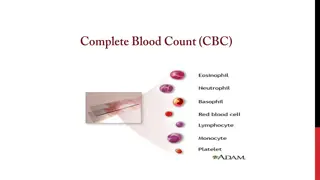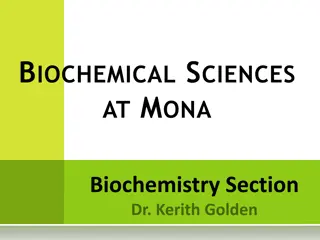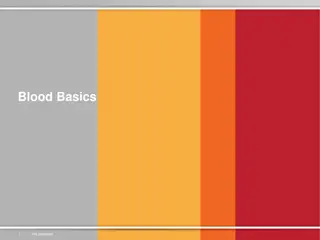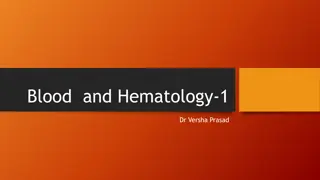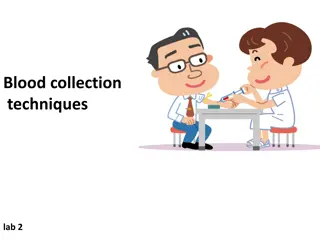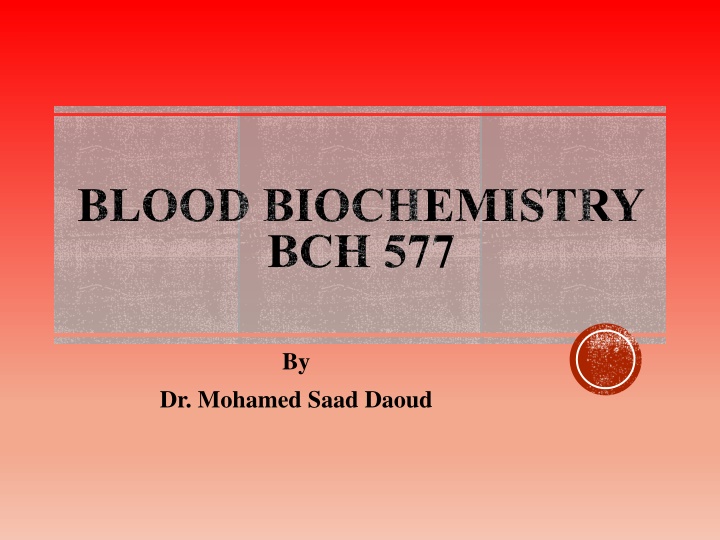
Immunity and Acquired Immunity for Better Health
Learn about the human body's natural immunity mechanisms, such as phagocytosis and chemical compounds, as well as acquired immunity through antibodies and lymphocytes. Explore the basic types of acquired immunity - humoral and cell-mediated immunity, and understand the roles of T and B lymphocytes in promoting immune responses. Enhance your knowledge of how the body defends itself against various invaders for overall well-being.
Download Presentation

Please find below an Image/Link to download the presentation.
The content on the website is provided AS IS for your information and personal use only. It may not be sold, licensed, or shared on other websites without obtaining consent from the author. If you encounter any issues during the download, it is possible that the publisher has removed the file from their server.
You are allowed to download the files provided on this website for personal or commercial use, subject to the condition that they are used lawfully. All files are the property of their respective owners.
The content on the website is provided AS IS for your information and personal use only. It may not be sold, licensed, or shared on other websites without obtaining consent from the author.
E N D
Presentation Transcript
BLOOD BIOCHEMISTRY BCH 577 By Dr. Mohamed Saad Daoud
Immunity: The ability of human body to resist all types of organisms or toxins that tend to damage the tissues and organs. 1. Phagocytosis of bacteria and other invaders by white blood cells and cells of the tissue macrophage system. 2. Destruction of swallowed organisms by the acid secretions of the stomach and the digestive enzymes. 3. Resistance of the skin to invasion by organisms. 4. In the blood, presence of certain chemical compounds that attach to foreign organisms or toxins and destroy them. Some of these compounds are 2 Dr. Mohamed Saad Daoud
(1) lysozyme, a mucolytic polysaccharide that attacks bacteria and causes them to dissolute. (2) basic polypeptides, which react with and inactivate certain types of gram-positive bacteria (3) the complement complex, a system of about 20 proteins that can be activated in various ways to destroy bacteria (4) natural killer lymphocytes that can recognize and destroy foreign cells, tumor cells, and even some infected cells. 3 Dr. Mohamed Saad Daoud
Acquired (acqu) Immunity The human body has the ability to develop extremely powerful specific immunity against individual invading agents such as lethal bacteria, viruses, toxins, and even foreign tissues from other animals. Acquired immunity is caused by a special immune system that forms antibodies and/or activated lymphocytes that attack and destroy the specific invading organism or toxin. 4 Dr. Mohamed Saad Daoud
Basic Types of Acquired Immunity In one of these the body develops circulating antibodies, which are globulin molecules in the blood plasma that are capable of attacking the invading agent. This type of immunity is called humoral immunity or B-cell immunity (because B lymphocytes produce the antibodies). The second type of acquired immunity is achieved through the formation of large numbers of activated T lymphocytes that are specifically crafted in the lymph nodes to destroy the foreign agent. This type of immunity is called cell-mediated immunity or T-cell immunity (because the activated lymphocytes are T lymphocytes). 5 Dr. Mohamed Saad Daoud
Two Types of Lymphocytes Promote Cell-Mediated Immunity or Humoral Immunity the T and the B Lymphocytes. Both types of lymphocytes are derived originally in the embryo from pluripotent hematopoietic stem cells that form lymphocytes as one of their most important offspring as they differentiate. Almost all of the lymphocytes that are formed eventually end up in the lymphoid tissue, but before doing so, they are further differentiated or preprocessed in the following ways. 6 Dr. Mohamed Saad Daoud
The lymphocytes that are destined to eventually form activated T lymphocytes first migrate to and are preprocessed in the thymus gland, and thus they are called T lymphocytes to designate the role of the thymus. They are responsible for cell-mediated immunity. The other population of lymphocytes, the B lymphocytes that are destined to form antibodies are preprocessed in the liver during mid fetal life and in the bone marrow in late fetal life and after birth. This population of cells was first discovered in birds, which have a special preprocessing organ called the bursa of Fabricius. For this reason, these lymphocytes are called B lymphocytes to designate the role of the bursa, and they are responsible for humoral immunity. 7 Dr. Mohamed Saad Daoud
Formation of antibodies and sensitized lymphocytes by a lymph node in response to antigens. This figure also shows the origin of thymic (T) and bursal (B) lymphocytes that respectively are responsible for the cell- mediated and humoral immune processes. 8 Dr. Mohamed Saad Daoud
Preprocessing of the T and B Lymphocytes Although all lymphocytes in the body originate from lymphocyte- committed stem cells of the embryo, these stem cells themselves are incapable of forming directly either activated T lymphocytes or antibodies. Before they can do so, they must be further differentiated in appropriate processing areas as follows. Thymus Gland Preprocesses the T Lymphocytes. The T lymphocytes, after origination in the bone marrow, first migrate to the thymus gland. In thymus gland, they divide rapidly and at the same time develop extreme diversity for reacting against different specific antigens. 9 Dr. Mohamed Saad Daoud
That is, one thymic lymphocyte develops specific reactivity against one antigen. Then the next lymphocyte develops specificity against another antigen. This continues until there are thousands of different types of thymic lymphocytes with specific reactivities against many thousands of different antigens. These different types of preprocessed T lymphocytes now leave the thymus and spread by way of the blood throughout the body to lodge in lymphoid tissue everywhere. 10 Dr. Mohamed Saad Daoud
The thymus also makes certain that any T lymphocytes leaving the thymus will not react against proteins or other antigens that are present in the body s own tissues; otherwise, the T lymphocytes would be lethal to the person s own body in only a few days. The thymus selects which T lymphocytes will be released by first mixing them with virtually all the specific self-antigens from the body s own tissues. 11 Dr. Mohamed Saad Daoud
If a T lymphocyte reacts, it is destroyed and phagocytized instead of being released. This happens to as many as 90 per cent of the cells. Thus, the only cells that are finally released are those that are nonreactive against the body s own antigens they react only against antigens from an outside source, such as from a bacterium, a toxin, or even transplanted tissue from another person. Most of the preprocessing of T lymphocytes in the thymus occurs shortly before birth of a baby and for a few months after birth. Beyond this period, removal of the thymus gland diminishes (but does not eliminate) the T-lymphocytic immune system. 12 Dr. Mohamed Saad Daoud
Liver and Bone Marrow Preprocess the B Lymphocytes. B lymphocytes are known to be preprocessed in the liver during mid fetal life and in the bone marrow during late fetal life and after birth. B lymphocytes are different from T lymphocytes in two ways: First, instead of the whole cell developing reactivity against the antigen, as occurs for the T lymphocytes, the B lymphocytes actively secrete antibodies that are the reactive agents. These agents are large protein molecules that are capable of combining with and destroying the antigenic substance. 13 Dr. Mohamed Saad Daoud
Second, the B lymphocytes have even greater diversity than the T lymphocytes, thus forming many millions of types of B-lymphocyte antibodies with different specific reactivites. After preprocessing, the B lymphocytes, like the T lymphocytes, migrate to lymphoid tissue throughout the body, where they lodge near but slightly removed from the T-lymphocyte areas. 14 Dr. Mohamed Saad Daoud
T Lymphocytes and B-Lymphocyte Antibodies React Highly Specifically Against Specific Antigens: Role of Lymphocyte Clones When specific antigens come in contact with T and B lymphocytes in the lymphoid tissue, certain of the T lymphocytes become activated to form activated T cells, and certain of the B lymphocytes become activated to form antibodies. The activated T cells and antibodies in turn react highly specifically against the particular types of antigens that initiated their development. Millions of different types of preformed B lymphocytes and preformed T lymphocytes that are capable of forming highly specific types of antibodies or T cells have been stored in the lymph tissue. 15 Dr. Mohamed Saad Daoud
Each of these preformed lymphocytes is capable of forming only one type of antibody or one type of T cell with a single type of specificity. The specific type of antigen can react can activate lymphocyte. Once the specific lymphocyte is activated by its antigen , it reproduces wildly, forming tremendous numbers of duplicate lymphocytes. If it is a B lymphocyte, its progeny will eventually secrete the specific type of antibody that then circulates throughout the body. If it is a T lymphocyte, its progeny are specific sensitized T cells that are released into the lymph and then carried to the blood and circulated through all the tissue fluids and back into the lymph, sometimes circulating around and around in this circuit for months or years. 16 Dr. Mohamed Saad Daoud
All the different lymphocytes that are capable of forming one specificity of antibody or T cell are called a clone of lymphocytes. That is, the lymphocytes in each clone are alike and are derived originally from one or a few early lymphocytes of its specific type. 17 Dr. Mohamed Saad Daoud
Origin of the Many Clones of Lymphocytes The whole gene for forming each type of T cell or B cell is never present in the original stem cells from which the functional immune cells are formed. Instead, there are only gene segments actually, hundreds of such segments, but not whole genes. During preprocessing of the respective T- and B-cell lymphocytes, these gene segments become mixed with one another in random combinations, in this way finally forming whole genes. 18 Dr. Mohamed Saad Daoud
Because there are several hundred types of gene segments, as well as millions of different combinations in which the segments can be arranged in single cells, one can understand the millions of different cell gene types that can occur. For each functional T or B lymphocyte that is finally formed, the gene structure codes for only a single antigen specificity. These mature cells then become the highly specific T and B cells that spread to and populate the lymphoid tissue 19 Dr. Mohamed Saad Daoud
Mechanism for Activating a Clone of Lymphocytes Each clone of lymphocytes is responsive to only a single type of antigen (or to several similar antigens that have almost exactly the same stereo chemical characteristics). The reason for this is the following: In the case of the B lymphocytes, each of these has on the surface of its cell membrane about 100,000 antibody molecules that will react highly specifically with only one specific type of antigen. Therefore, when the appropriate antigen comes along, it immediately attaches to the antibody in the cell membrane; this leads to the activation process. 20 Dr. Mohamed Saad Daoud
In the case of the T lymphocytes, molecules similar to antibodies, called surface receptor proteins (or T-cell markers), are on the surface of the T- cell membrane, and these, too, are highly specific for one specified activating antigen. 21 Dr. Mohamed Saad Daoud
Role of Macrophages in the Activation Process. Aside from the lymphocytes in lymphoid tissue, exactly millions of macrophages is also present in the same tissue. These line the sinusoids of the lymph nodes, spleen, and other lymphoid tissue, and they lie in apposition to many of the lymph node lymphocytes. Most invading organisms are first phagocytized and partially digested by the macrophages, and the antigenic products are liberated into the macrophage cytosol. The macrophages then pass these antigens by cell-to- cell contact directly to the lymphocytes, thus leading to activation of the specified lymphocytic clones. 22 Dr. Mohamed Saad Daoud
The macrophages, in addition, secrete a special activating substance (interleukin 1) that promotes still further growth and reproduction of the specific lymphocytes. Role of the T Cells in Activation of the B Lymphocytes. Most antigens activate both T lymphocytes and B lymphocytes at the same time. Some of the T cells that are formed, called helper cells, secrete specific substances (collectively called lymphokines) that activate the specific B lymphocytes. Without the aid of these helper T cells, the quantity of antibodies formed by the B lymphocytes is usually slight. 23 Dr. Mohamed Saad Daoud
Formation of Antibodies by Plasma Cells. Before exposure to a specific antigen, the clones of B lymphocytes remain resting in the lymphoid tissue. On entry of a foreign antigen, macrophages in the lymphoid tissue phagocytize the antigen and then present it to adjacent B lymphocytes. In addition, the antigen is presented to T cells at the same time, and activated helper T cells are formed. These helper cells also contribute to extreme activation of the B lymphocytes. Those B lymphocytes specific for the antigen immediately enlarge and take on the appearance of lymphoblasts. 24 Dr. Mohamed Saad Daoud
Some of the lymphoblasts further differentiate to form plasmablasts, which are precursors of plasma cells. In the plasmablasts, the cytoplasm expands and the rough endoplasmic reticulum vastly proliferates. The plasmablasts then begin to divide at a rate of about once every 10 hours for about nine divisions, giving in 4 days a total population of about 500 cells for each original plasmablast. The mature plasma cell then produces gamma globulin antibodies at an extremely rapid rate about 2000 molecules per second for each plasma cell. In turn, the antibodies are secreted into the lymph and carried to the circulating blood. This process continues for several days or weeks until finally exhaustion and death of the plasma cells occur. 25 Dr. Mohamed Saad Daoud
Leukocytosis, Leukopenia, and Other Reactive Changes of Myelopoiesis Leukocytosis is present if leukocytes are increased to more than 10,000/ L. Leukopenia; leukocytes are below 4000/ L. Infants and small children have slightly different normal values. A neutropenia is present if granulocytes are below 2000/ L, agranulocytosis; granulocytes increased greater than 8000/ L. In leukemoid reactions, leukocytes are increased to more than 30,000/ L. A left shift in the differential count means that the number of band forms (and metamyelocytes) is increased to more than 5%. 26 Dr. Mohamed Saad Daoud
Differential Diagnosis of Leukocytosis (Neutrophilic LeuKocytosis) Leukocytosis is a sign of any number of bacterial or other infections. Most cases of infectious leukocytosis are associated with a left shift and neutrophils often show a toxic granulation (dark coarse granules found in granulocytes, particularly neutrophils, in patients with inflammatory conditions). 27 Dr. Mohamed Saad Daoud
Leukopenia Leukopenia occasionally occurs in which the bone marrow produces very few A white blood cells, leaving the body unprotected against many bacteria and other agents that might invade the tissues Normally, the human body lives in symbiosis with many bacteria, Any decrease in the number of white blood cells immediately allows invasion of adjacent tissues by bacteria that are already present. Within 2 days after the bone marrow stops producing white blood cells, ulcers may appear in the mouth and colon, or the person might develop some form of severe respiratory infection. 28 Dr. Mohamed Saad Daoud
Bacteria from the ulcers rapidly invade surrounding tissues and the blood. Without treatment, death often ensues in less than a week after acute total leukopenia begins. Irradiation of the body by x-rays or gamma rays, or exposure to drugs and chemicals that contain benzene or anthracene nuclei, is likely to cause aplasia of the bone marrow. Some common drugs, such as chloramphenicol (an antibiotic), thiouracil (used to treat thyrotoxicosis), and even various barbiturate hypnotics, on very rare occasions cause leukopenia, thus setting off the entire infectious sequence of this malady. 29 Dr. Mohamed Saad Daoud
After moderate irradiation injury to the bone marrow, some stem cells, myeloblasts, and hemocytoblasts may remain undestroyed in the marrow and are capable of regenerating the bone marrow, provided sufficient time is available. A patient properly treated with transfusions, plus antibiotics and other drugs to ward off infection usually develops enough new bone marrow within weeks to months for blood cell concentrations to return to normal. 30 Dr. Mohamed Saad Daoud
Leukemias Uncontrolled production of white blood cells can be caused by cancerous mutation of a myelogenous or lymphogenous cell. This causes leukemia, which is usually characterized by greatly increased numbers of abnormal white blood cells in the circulating blood. Types of Leukemia: Leukemias are divided into two general types, lymphocytic leukemias and myelogenous leukemias. The lymphocytic leukemias are caused by cancerous production of lymphoid cells, usually beginning in a lymph node or other lymphocytic tissue and spreading to other areas of the body. 31 Dr. Mohamed Saad Daoud
The myelogenous leukemia, begins by cancerous production of young myelogenous cells in the bone marrow and then spreads throughout the body so that white blood cells are produced in many extramedullary tissues, especially in the lymph nodes, spleen, and liver. In myelogenous leukemia, The cancerous process occasionally produces partially differentiated cells, resulting in what might be called neutrophilic leukemia, eosinophilic leukemia, basophilic leukemia, or monocytic leukemia. 32 Dr. Mohamed Saad Daoud
More frequently, however, the leukemia cells are bizarre and undifferentiated and not identical to any of the normal white blood cells. Usually, the more undifferentiated the cell, the more acute is the leukemia, often leading to death within a few months if untreated. With some of the more differentiated cells, the process can be chronic, sometimes developing slowly over 10 to 20 years. Leukemic cells, especially the very undifferentiated cells, are usually nonfunctional for providing the normal protection against infection. 33 Dr. Mohamed Saad Daoud
Effects of Leukemia on the Body The first effect of leukemia is metastatic growth of leukemic cells in abnormal areas of the body. Leukemic cells from the bone marrow may reproduce so greatly that they invade the surrounding bone, causing pain and, eventually, a tendency for bones to fracture easily. Almost all leukemias eventually spread to the spleen, lymph nodes, liver, and other vascular regions, regardless of whether the origin of the leukemia is in the bone marrow or the lymph nodes. Common effects in leukemia are the development of infection, severe anemia, and a bleeding tendency caused by thrombocytopenia (lack of platelets). 34 Dr. Mohamed Saad Daoud
These effects result mainly from the displacement of the normal bone marrow and lymphoid cells by the nonfunctional leukemic cells. the most important effect of leukemia on the body is the excessive use of metabolic substrates by the growing cancerous cells. 35 Dr. Mohamed Saad Daoud
The leukemic tissues reproduce new cells so rapidly that tremendous demands are made on the body reserves for foodstuffs, specific amino acids, and vitamins. Consequently, the energy of the patient is greatly depleted, and excessive utilization of amino acids by the leukemic cells causes especially rapid deterioration of the normal protein tissues of the body. Thus, while the leukemic tissues grow, other tissues become debilitated. After metabolic starvation has continued long enough, this alone is sufficient to cause death. 36 Dr. Mohamed Saad Daoud

